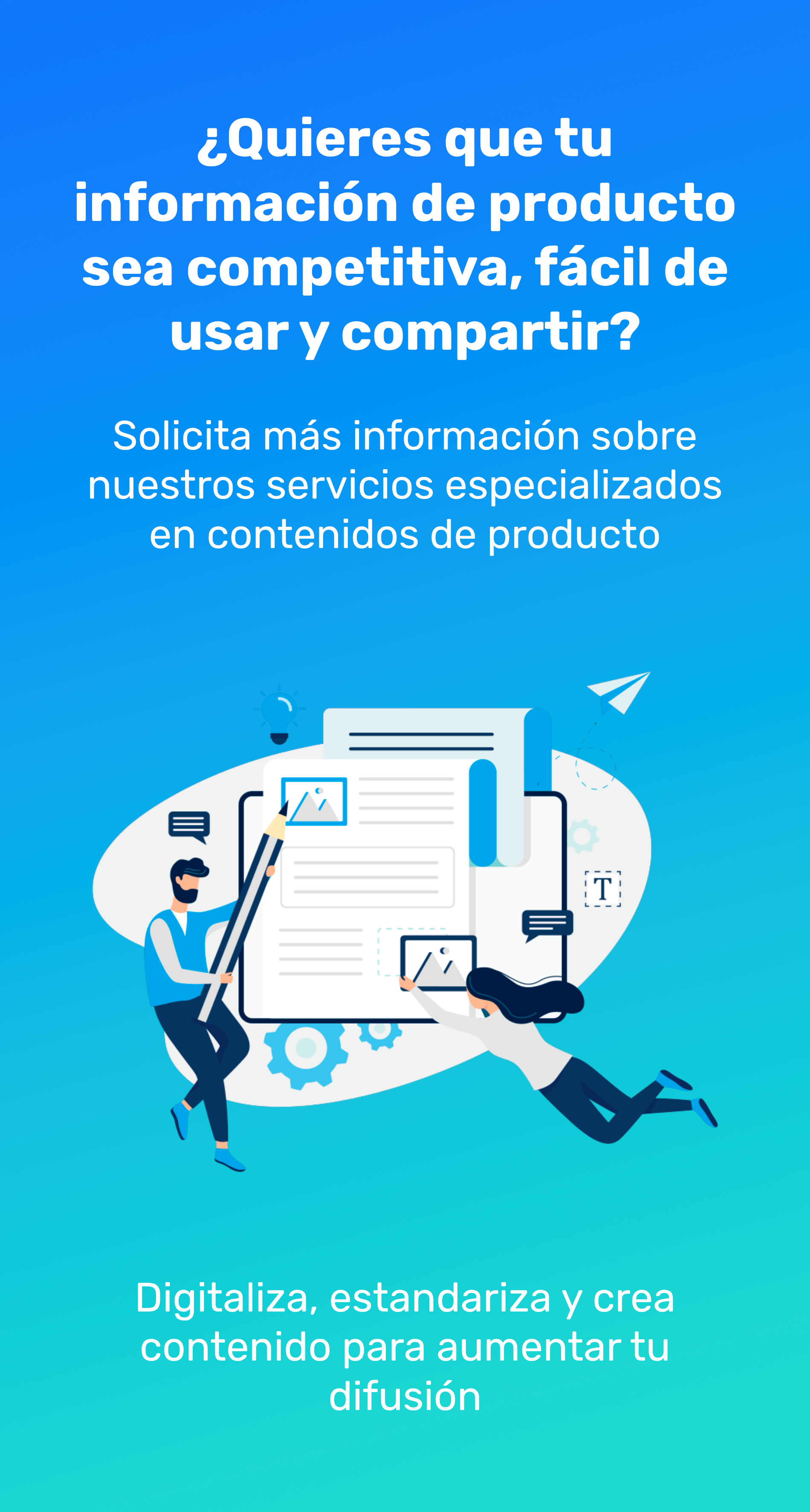The first week of confinement already hints at important changes in our sector. With many construction sites in operation, but also with many counters practically closed to the public, the importance of the online environment can only increase. In the short term, and considering commercial visits are not allowed, product-related digital searches are expected to peak, both to resolve doubts and locate solutions. Additionally, when the pandemic is over, many construction professionals will still search for information on the internet and continue buying materials from those eCommerce sites that helped them during the lockdown.
One of the keys to success in the digital environment is already an open secret: the quality of our online product catalogue. If our sales team cannot support the sales process in store then, our products must speak for themselves on the internet. The product information on our website should anticipate and respond to the doubts and questions of our buyers.
There is no time to waste. The forced digitization of the last few weeks should encourage further projects to transform the promotion and sales of construction materials. For these online transformation projects, the digital catalogue is the cornerstone of any potential change. In this article we’ll look specifically at how to improve the quality of a product catalogue. Further training is also available in the form of webinars. At Telematel, we’ve prepared a series of online tutorials focused on the quality of product information. You can find out more on this page.

En este artículo, cubriremos los siguientes apartados:
1. First of all, what is your brand’s current situation?
On average, the completion of the product sheets in the construction market is around 47.5%. A fairly low value considering the importance of product information on the internet. If you still don’t know where your brand is, what is your information quality level or how to measure it, we recommend this to be your first objective. For this reason, the very first webinar we would like to invite you to is related to this topic: Latest News on Go!Catalog for Manufacturers”. We will talk about how to measure the quality of a catalogue in an automated way.
From here, you will have an overview of your situation. Remember that you have a lot to say regarding what is published about your brand. The following points will give you further clues.
2. The importance of images and multimedia files
Despite being a common saying, “an image is worth a thousand words» is key to argue the importance of product photographs. Not having an image on an eCommerce site makes the user’s interest in a product drop around 80%. On the contrary, having good images ensures your product is well identified. Note that it is not enough to have a single main photograph. Also:
- It is important that you have images from various perspectives including front, 45% and rear. Environment or application photographs are useful too. Highlight the most relevant details such as connections, finishings, etc.
- Don’t forget to assess the weight of your files to ensure they are suitable for different online channels. An image for a printed catalogue should not be the same as one for a website.
- Their size, scale and depth need to be amended depending on where they are going to be published.
- Each image format (JPG, TIG, PNG, AI…) has its advantages and disadvantages. Analyse them and confirm their compatibility with the platforms where your images are going to be published.
- Finally, make sure you offer any documentation that helps to understand your product in detail. Technical sheets, user manuals, diagrams, certificates, videos and many other documents that are known as multimedia files or product MIMEs.
Today, only 43% of the construction materials have more than one photograph per product. Therefore, much work remains to be done. If you want to study this topic in depth, we recommend that you attend our second webinar: "The importance of images and other multimedia files”.
3. Good descriptions for SEO and CRO
Product descriptions must also be taken care of as they are connected to SEO and CRO. The former topic is related to content optimisation from a search engine point of view. The second is focused on the conversion of visits to sales.
Identifying the keywords associated with your products and using them in the descriptions will help increase traffic to your site. Why? Having quality content, with a clear focus, is one of the key points Google and other search engines consider in their algorithms. There is a direct relation between the information on the product sheets and the level of traffic to each of your products in any online channel. Some recommendations:
- The product descriptions on your ERP may not be suitable for online sales. Google does not understand your abbreviations, nor can it guess what type of product you are talking about if it’s not stated clearly.
- You must be very aware of the context in which your products will be promoted. For example, if we talk about your own eCatalogue, your products will be grouped according to typology in a logical order. However, if it is a distributor’s eCommerce site, your product may be classified with different criteria than yours.
- And finally, if we refer to a marketplace like Amazon, it will be essential that you highlight your brand in each product description to give it maximum visibility on this platform.
Don’t forget that, at the moment, 30% of construction professionals assure that the main limitation of online shopping is actually the lack of product information. This explains why the third webinar we propose is focused on this topic.
4. Classification, coding and packaging information: the key elements to selling in marketplaces
The fact that Amazon maintains its level of service under these circumstances implies that construction professionals will adopt new shopping habits. In this new environment, if we do not appear directly as supplier brands, our distributors will be the ones to promote the products in the marketplace.
Despite this, even if you still do not plan to promote products on Amazon, your traditional distribution chain will also thank you for attending these last two webinars:
- Firstly, you will need to have good product coding and classification. In 95% of the marketplaces, it is necessary to have a GTIN or EAN-13 code for each item. The goal is to identify and locate each construction material to ensure there are no errors in the transaction and to reduce the return rate. One of the keys of any marketplace is to offer several purchase options for the same item. This would not be possible without a unique, universal and non-transferable code for each product. That code is the GTIN, usually known as the unit product barcode. It not only helps eCommerce sites, but also logistics in warehouses by streamlining reception, inventory and dispatch processes. In this fourth webinar we will cover how to comply with this requirement.
- Secondly, packaging and logistics data are essential for eCommerce sites. It is necessary to easily share the information regarding the dimensions and weight of the articles and their packaging. In online transactions, and in off-line sales expeditions, it is required to be able to calculate transport costs and guarantee the best method of handling items. We have also prepared a specific session to talk about packaging and logistics information.
5. Last but not least: don’t forget about social media
Take advantage of the fact that we are all in front of our mobiles now. Present your products in an attractive way. Upload your product catalogue to Facebook or Instagram, create small advertising campaigns and tag products in your publications and post. Give your products more visibility in social media and lead customers to your website or your distributors eCommerce platform.
Now that the construction professional is not able (or will avoid) approaching your client’s counter due to social distancing, online marketing becomes more important to request information. Also, don’t lose sight of the fact that the product information must be consistent across the different channels. If you are curious about how to start a promotion campaign on Facebook or Instagram, stay tuned for further free training on our blog.
Términos relacionados:
Canales digitalesContentFactoryFichas de Productogestión de contenidosSituación del mercadoNo te olvides de compartir este artículo
Suscríbete a la Newsletter
No te pierdas nuestros últimos artículos. Suscríbete a nuestra newsletter y recíbelos en tu inbox



